Cinema in the modern sense, i.e. public film screenings, was created by the Lumière brothers, but like most inventions, it was not without precedent. Motion pictures are even older; the first film has survived since 1888, and Edison also introduced his solution, the kinetoscope, in 1894.
Following the patent applied for in February 1895, the French Lumière brothers held public screenings on 28 December 1895, and cinema was born.
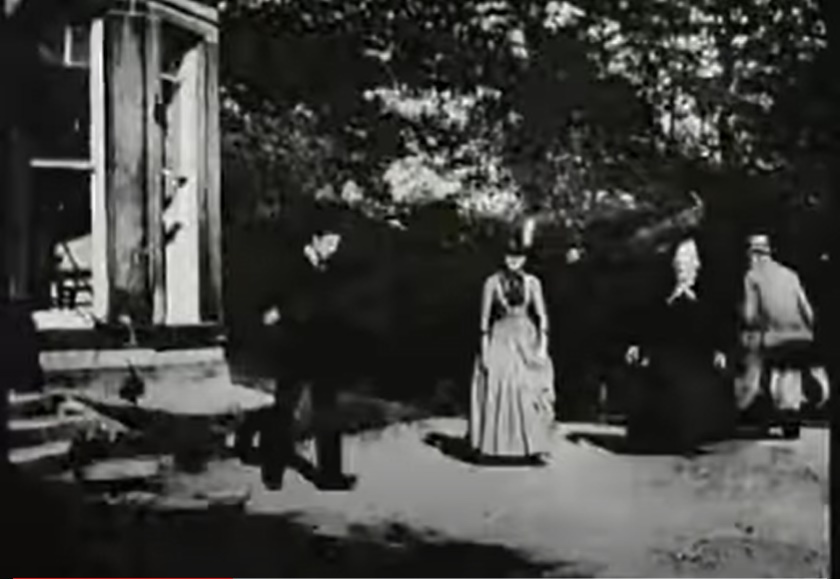 Az
Az
A frame of the first known film from 1888
This new miracle arrived in Budapest only five months later, 125 years ago, on a Sunday morning, 11 May 1896. Regular motion picture screenings began in the newly opened Royal Hotel on the Outer Ring Road (a few days earlier moving images were presented in the Somossy nightclub on the site of today’s Operetta Theater, but the first domestic cinema screening in the modern sense happened in the Royal Hotel). Of course, these were not truly films. They were not written and filmed stories, but rather photographs brought to life, or funny, surprising scenes, in black and white and without sound. On 10 May 1896, Pesti Hírlap wrote about the new miracle:
“Crowds of people running, a moving train, the disembarkation of passengers, a sea beach, people lighting cigars and drinking beer while playing cards, all living and moving in front of us. The railroad train rumbles before our eyes. It can be seen from afar, it gets closer, officials and porters appear on the platform, and the train arrives, the passengers get off, and we see the busy life on the platform. And every single picture is so wonderful, surprising.”
A moving image is an optical illusion. They are actually a series of still images that follow each other quickly, and the differences are smoothed out by our brains and perceived as continuous motion. The original technology projected 900 images per minute or 15 images per second. Today’s standard is 24 frames per second. In some cases, it can, of course, be faster.
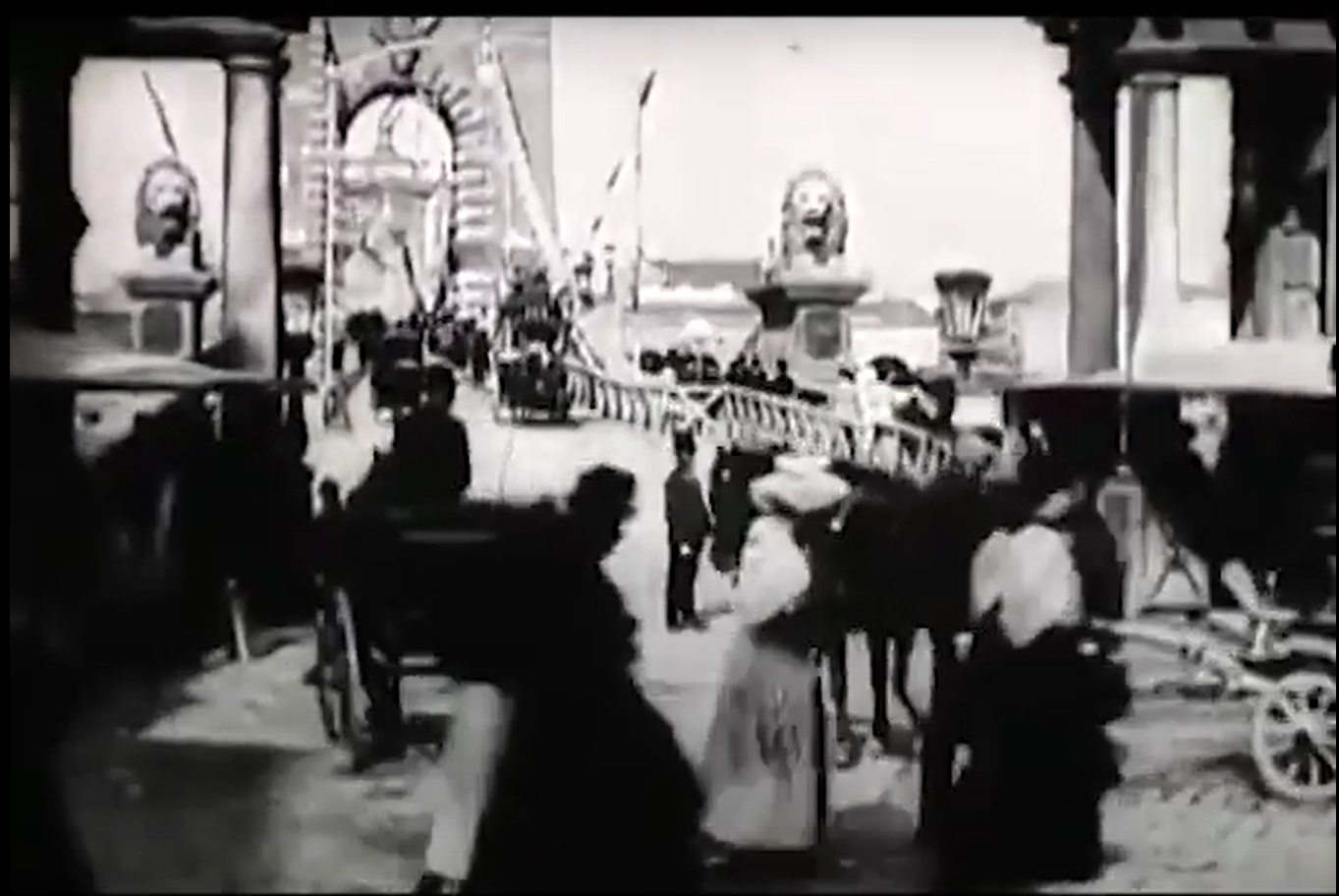 Frame of Chain Bridge in 1896
Frame of Chain Bridge in 1896
But back to the end of the 19th century. On Sunday, 11 May 1896, in the main hall of the brand new Royal Hotel on the Outer Ring Road, the public could see something that had never happened in Hungary before: moving pictures or, as the newspaper wrote, live pictures. Screenings took place twice a day, from 10 a.m. to 1 p.m. and from 2 to 8 p.m., followed by a third screening from 9 to 11 p.m. The entry fee was 50 kreuzer, and the show changed every Friday.
The invention was also presented to the king in Vienna not long before its introduction in Budapest.
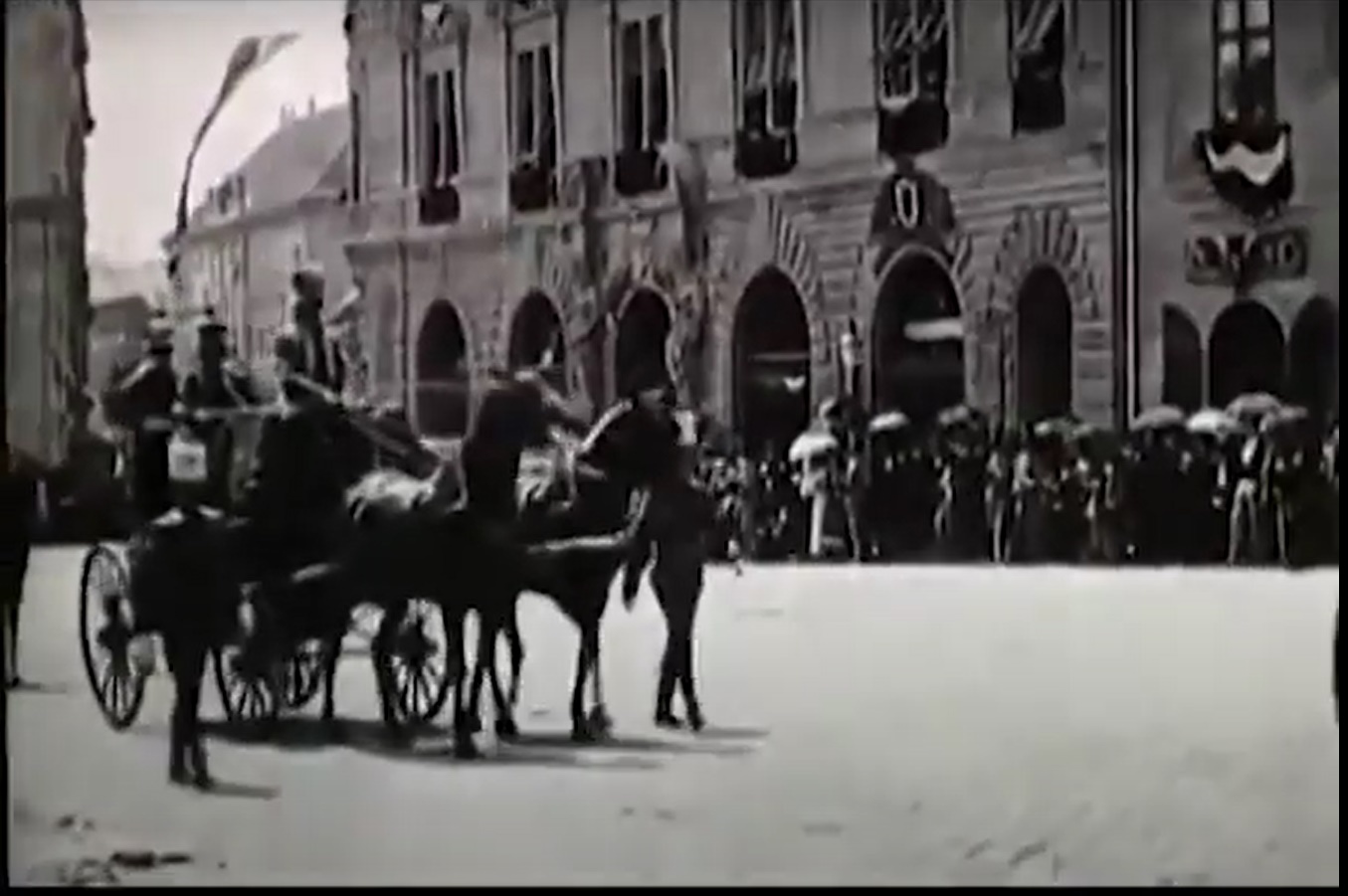 The parade on Dísz Square was the theme of one of the first recordings
The parade on Dísz Square was the theme of one of the first recordings
Not only did the first screening take place in Budapest in May 1896, but the first films were made and shot at several locations at the opening of the Millennium Exhibition. (The reels were not shown because the king’s Franz Joseph’s head was out of frame).
Performances began at the Royal Hotel, but shortly after the first screening, in June 1896, the first Hungarian cinema, Ikonográf, was opened at 41 Andrássy Avenue. It was owned by Arnold Sziklai and his brother, Zsigmond Sziklai, the cinematographer of the first Hungarian films. This is what Pesti Hírlap wrote about the hall on 17 July 1896:
“The cinematograph. The Lumiére brothers, who hail from Lyon, moved with their cinematographs from the Royal Hotel, where the first examples of this new invention were used, to 41 Andrássy Avenue. The recordings of the worship parade are truly beautiful."
Presumably, the record meant the recordings of the parade organised by Franz Joseph on Dísz Square.
Although the film theatre was not long-lived on Andrássy Avenue (the Hungarian word for cinema, “mozi” was born in 1907), in a short time, the screening of films became a popular event in cafés, and more and more cinemas opened in Budapest and the countryside.
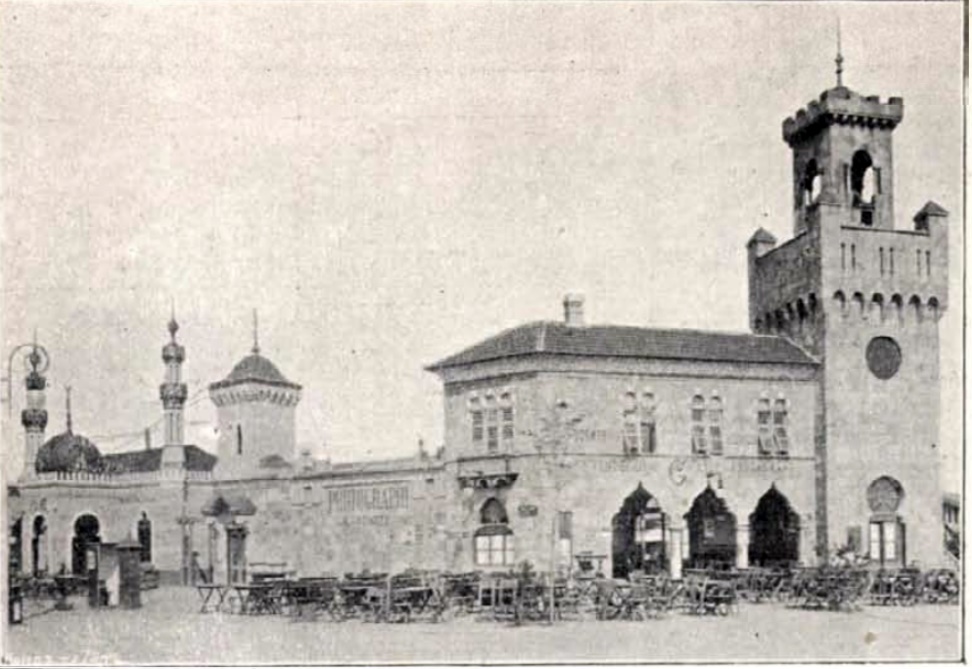 Edison's film screenings took place in Kis-Konstantinápoly in Lágymányos (Photo: Vasárnapi Ujság, 6 September 1896)
Edison's film screenings took place in Kis-Konstantinápoly in Lágymányos (Photo: Vasárnapi Ujság, 6 September 1896)
Competition for the first Lumière screening soon appeared in Budapest. In 1894, Edison patented a machine in which moving films could be seen, and this machine also appeared in the Hungarian capital in 1896. Edison’s kinetoscope was available to the general public from May 1896 in the Kis-Konstantinápoly in Lágymányos, which was an entertainment centre. It was cheaper than the screenings held at the Royal Hotel. A ticket to Kis-Konsantinápoly was a paltry 40 kreuzer.
Cover Photo: The venue of the first public film screening in Hungary, the Royal Grand Hotel on the Outer Ring Road (Photo: FSZEK Budapest Collection)

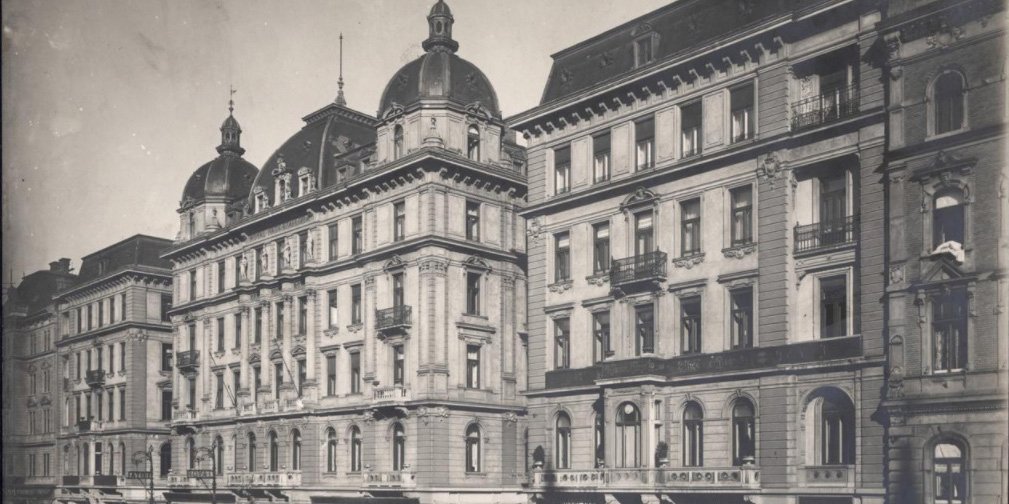



































Hozzászólások
Log in or register to comment!
Login Registration